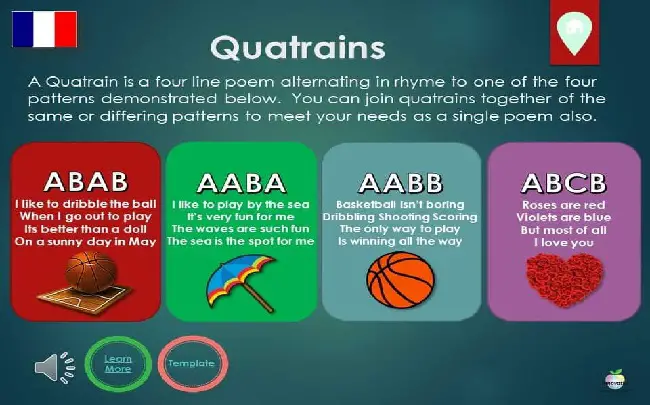An epigram is a terse, amusing, memorable, and occasionally startling statement. The term ‘epigram’ has its roots in the Greek language, coming from the word ‘epigramma‘, meaning ‘inscription’. Initially appearing as inscriptions on stone monuments in Ancient Greece, they transitioned into a literary genre during the Hellenistic period and have persisted ever since.
Known for their brevity, wit, satirical nature, and the ability to leave a powerful impression, epigrams often teeter on the paradoxical or ironic. Such expressions have been beautifully crafted by several renowned poets including Ben Jonson, Robert Herrick, and Alexander Pope who have transformed the art of writing an epigram poem.
For instance, Pope’s epigram radiates his characteristic wit and mockery as in:
You beat your pate, and fancy wit will come. Knock as you please, there’s nobody at home
Read Also: How To Write Unrequited Poems

How To Create An Epigram Poem
To create an original Epigram poem, there are a few key components to consider.
Brevity
Epigrams are typically short and concise, often only a couple of lines long. This does not, however, limit their depth or impact.
Wit Or Humour
This is often achieved through the use of irony or satire. The poem may make a sharp comment or observation about a particular subject or situation. This element of good-natured ridicule can be seen in Samuel Taylor Coleridge’s epigram:
Sir, I admit your general rule | That every poet is a fool, | But you yourself may serve to show it, | That every fool is not a poet
Memorable
An epigram should be memorable, creating a lasting impression on the reader. This can be achieved through a clever turn of phrase, a surprising twist, or an unexpected ending.
Practical Steps To Writing An Epigram Poem
Idea
The first step in creating an epigram begins with an idea. Think of a message or observation that you wish to express. It can be about human nature, social issues, daily life, or personal experiences. As an example, let us consider a criticism of the vanity inherent in social media culture.
Valid Argument
Once the subject is decided, it needs to be refined into a concise statement or argument. For our example, it could be:
‘In virtual worlds vanity’s supreme, authentic life a forgotten dream.’
Wit
The next step is to add wit or humour, often by using irony or satire. For this, ask yourself what’s amusing about the situation. In our example, this is already inherent in the implied contradiction between a ‘virtual world’ and an ‘authentic life’.
Memorable
Lastly, give your epigram an unexpected or memorable ending. This is often achieved by delivering the final punchline in the last few words after setting it up in the initial lines. In our example, the surprise comes in the form of contrasting ‘vanity’ with ‘authentic life’, by suggesting that pursuing an artificial social media popularity eats away at real, authentic existence.
With these simple steps, you can create your own epigram and begin to explore the world of this compressed, impactful genre of poetry.
After traversing the enchanting narrative of epigram poems, demystifying its eloquent wit and exploring the labyrinth of underlying meanings, it is undoubtedly evident that this genre holds an immense allure. The essence lies in the challenge of condensing vast meanings into few words, the impact multiplied by the potency of wit and irony. Revisiting the works of famous epigrams helps us appreciate the intricacies of this unique poetic form.
Analysis Of Famous Epigram Poems
Deconstruction of Ben Jonson’s Epigram
Among the most notable contributors to this style of writing was Ben Jonson, an esteemed English poet, dramatist, and actor from the late 16th to early 17th centuries, who encapsulates the essence of the form with this pithy epigram:
“I am not all that I appear to be— If you would know my worth, then look within.”
The succinct yet profound nature of these two lines achieves the cardinal goal of the epigram. The clever and impactful wording invokes thoughts about personal identity, urging self-assessment over outward appearances. Additionally, it employs Jonson’s characteristic wit to subtly rebuke shallow assumptions about a person’s value.
Exploring Alexander Pope’s Epigrammatic Mastery
Alexander Pope, a prominent 18th-century English poet, was acclaimed for his highly quotable and insightful epigrams. One such example reads:
“Man may be right, and man may be wrong, But God’s the standard to which we belong.”
This epigram’s theme revolves around absolute morality and divine judgment. It states that human perception of right and wrong can be subjective, and it’s only through divine reference we can gain absolute truth. His precise word choice and the rhythm of his lines convey complexity and depth within a compact form.
Oscar Wilde’s Use of Epigram in “The Picture of Dorian Gray”
Oscar Wilde, a literary figure known for his sharp wit and social commentary, frequently incorporated epigrams within his works. Consider this excerpt from his book ‘The Picture of Dorian Gray’:
“The only way to get rid of temptation is to yield to it.”
Wilde’s epigrams are distinguished by his unique wit and a careful exploration of societal conventions. This line presents a paradox, undermining traditional advice to resist temptation. The theme, thereby, centers around human struggles with their desires and moral judgment. The epigram’s syntax is decidedly simple, but its implications and interpretations are extensive, highlighting Wilde’s skillful use of the epigram form.
Emily Dickinson’s Captivating Epigrammatic Style
Emily Dickinson’s unique approach to poetry and her deft command of the epigrammatic style is famously illustrated in her poem “Tell All The Truth But Tell It Slant”:
“Success in Circuit lies”
This succinct epigram underlines the idea that truth is often more palatable and impactful when delivered indirectly. Dickinson’s deliberate choice of the word ‘circuit’, over a simpler choice such as ‘cycle’, adds layers of depth and encourages readers to explore intricate concepts of truth and perception. It exemplifies Dickinson’s gift for distilling profound observations into concise nuggets of wisdom.
Conclusion
Writing an epigram involves distilling a clever idea or observation into a concise and witty form. By mastering the art of brevity and embracing wordplay, aspiring writers can create epigrams that leave a lasting impact on their readers. Remember, practice and creativity are key to perfecting the craft of writing these delightful and thought-provoking poetic gems




